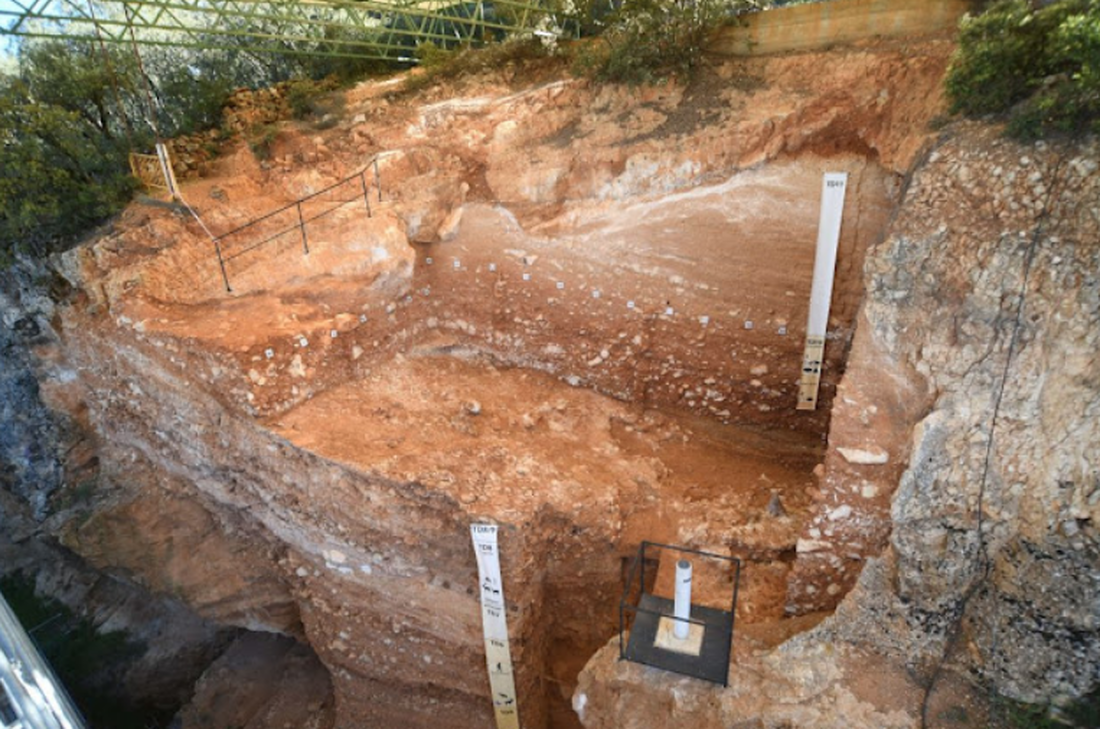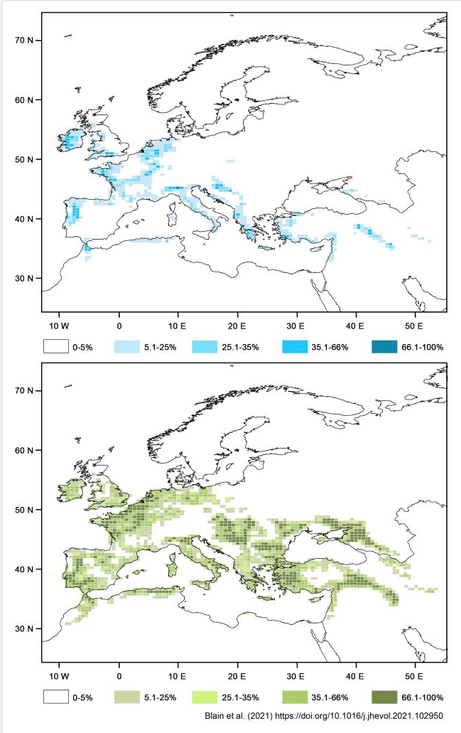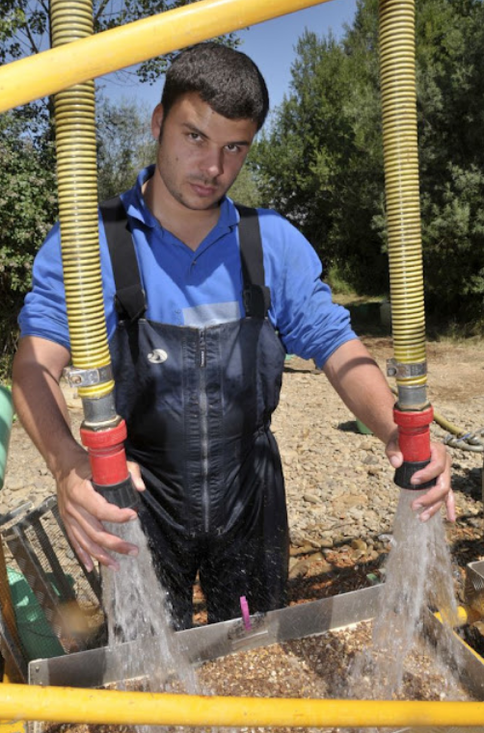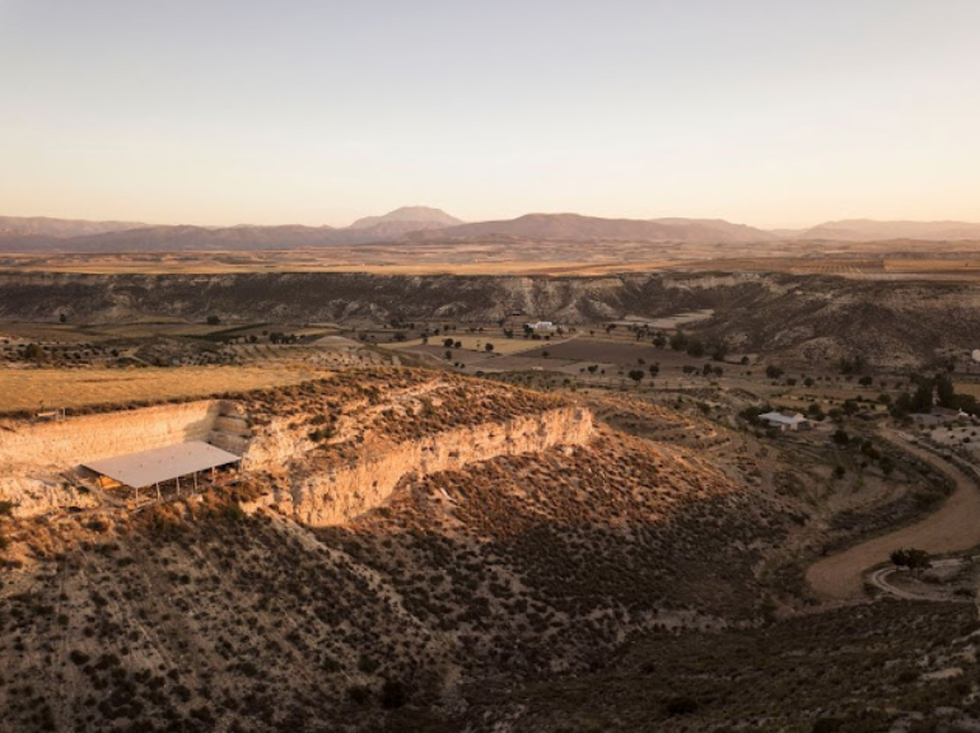450,000 YEARS AGO, TECHNOLOGICAL AND SUBSISTENCE ADVANCES COULD HAVE HELPED TO OVERCOME CLIMATIC CONDITIONS MARKED BY ARIDITY AND COLD
This is stated in an article published in the Journal of Human Evolution and headed by members of the IPHES-CERCA and the URV
The Earth’s climate has changed significantly throughout its history. Thus, the alternation of glacial periods (cold and dry) and interglacial periods (temperate and humid) have conditioned the occupation of certain territories. Until 450,000 years ago, in the Iberian Peninsula, we have no evidence of human presence in a large part of the Meseta. However, from that time on, we find sites as emblematic as Ambrona (Soria) or Cuesta de la Bajada (Teruel).
Why is this change taking place? There is no simple explanation, but it is clear that this is a period of transformation. In terms of stone tools, there is a more efficient management of the raw materials with which they are made, and their diversity and specialization is expanded. At the same time, more complex gathering and hunting strategies are documented, such as, for example, the communal bison hunting events at Gran Dolina (level TD10.2), in Atapuerca (Burgos), or the first wooden spears at sites such as Schöningen (Germany). In addition, there is a greater use of caves, an increasingly constant presence of evidence of fire, as well as growing evidence of symbolic behavior. In short, elements that point to a more cohesive social structure, which contributed to overcoming the difficulties inherent to unfavorable climatic conditions, marked by aridity and cold.
This is stated in a scientific article published in the Journal of Human Evolution, whose main authors are the researcher of the Institut Català de Paleoecologia Humana i Evolució Social (IPHES-CERCA) and the Universitat Rovira i Virgili (URV) Hugo Blain, and Juan Manuel Jiménez-Arenas, professor at the University of Granada (UdG), but which has also had the participation of the archaeologist Andreu Ollé (IPHES-CERCA and URV), the researcher Paula Garcia, Postdoctoral Fellow, and the biologist Ana Fagoaga, from the same center. Francisco Ruiz-Sánchez from the University of Valencia and the Museu Valencià d’Història Natural has also collaborated. Together they have carried out an extensive study of the climate between 2 million and 150,000 years ago, based on the remains of amphibians and reptiles found at the sites. This research has been carried out within the framework of the Orce Project, led by the University of Granada, and the Atapuerca subproject, led by IPHES-CERCA and URV.
From these data, the team of scientists has created an Iberian ecological model that has been transferred to the rest of the European continent. They have based their work on two fundamental sites for understanding human evolution and the scenario in which it took its first steps in Europe: Orce (Granada) and Atapuerca (Burgos).
The collaboration and integration of results from these emblematic sites has made it possible to create a model on a European scale, before and after 450,000 years ago. Why this limit? “First of all, because at that time the climate becomes more extreme: the warm periods are warmer and the cold periods much colder and longer”, says Hugo Blain. Secondly, because very important technical changes are taking place”, he continues, “for the history of humankind. The most evident is the use and control of fire”.
It has been observed that the preferred habitat for the first Europeans (1.4 million – 450,000 years ago) was warmer, rainier and more forested than today. However, early European populations faced very different situations: “Orce was relatively dry and warm with respect to Atapuerca which presented more rainy and temperate conditions. On the other hand, the long and complete temporal sequence that Atapuerca offers us is key because it intersperses some -few- colder, drier intervals with fewer trees. And those moments are characterized because there is no human presence or because it is very weak”, explains Jiménez-Arenas.
The results of the study show that much of the Atlantic coast was very favorable for living before 450,000 years ago, but, after that date, the space potentially inhabited by humans expands significantly. The team was surprised that “although most of the climatic and habitat data come from Mediterranean contexts, many of the areas most likely to have been inhabited by the oldest humans on the European continent are located in areas close to the Atlantic Ocean”, says Blain.
Thus, the north of France and Germany would be ideal places for the first European populations to live, especially in times of greater climatic amelioration. Also the British Isles where the southwest of Great Britain (which was part of the continent at that time) and the whole of Ireland. “These would be areas where winters would be quite cold, although with a high rainfall regime and good tree cover”, says Jiménez-Arenas.
Bibliographic reference
Blain, H.-A., Fagoaga, A., Ruiz-Sánchez, F.J., García-Medrano, P., Ollé, A., Jiménez-Arenas, J.M. (2021) Coping with arid environments: A critical threshold for human expansion in Europe at the Marine Isotope Stage 12/11 transition? The case of the Iberian Peninsula. Journal of Human Evolution 153, 102950. https://doi.org/10.1016/j.jhevol.2021.102950.




